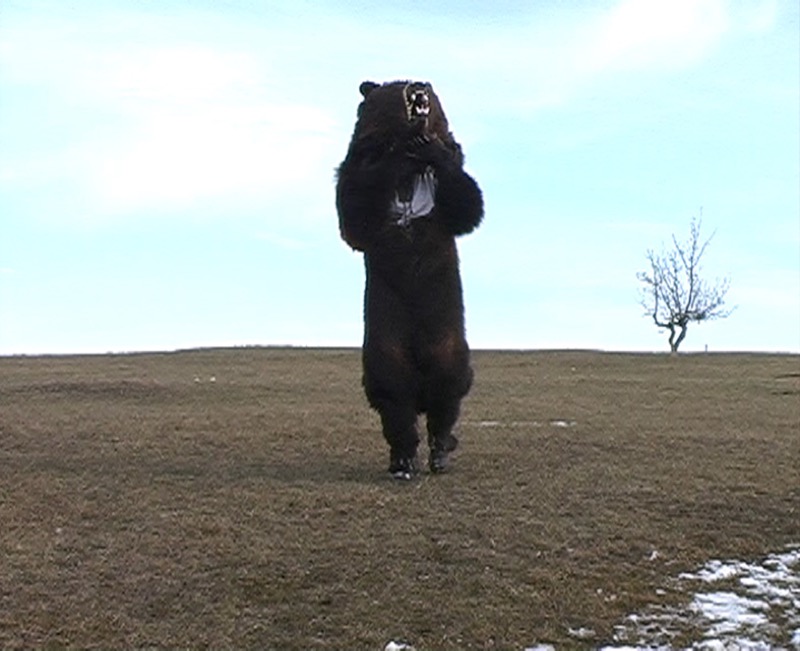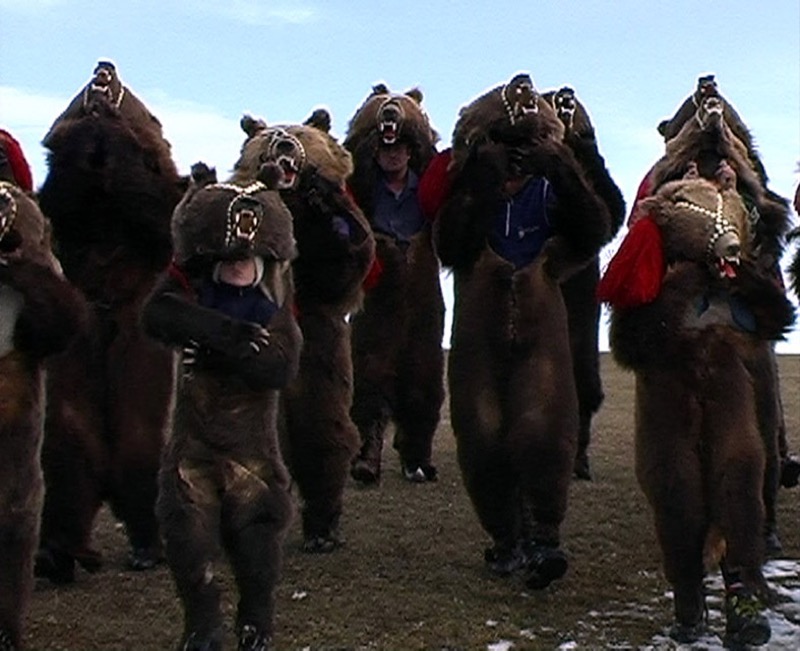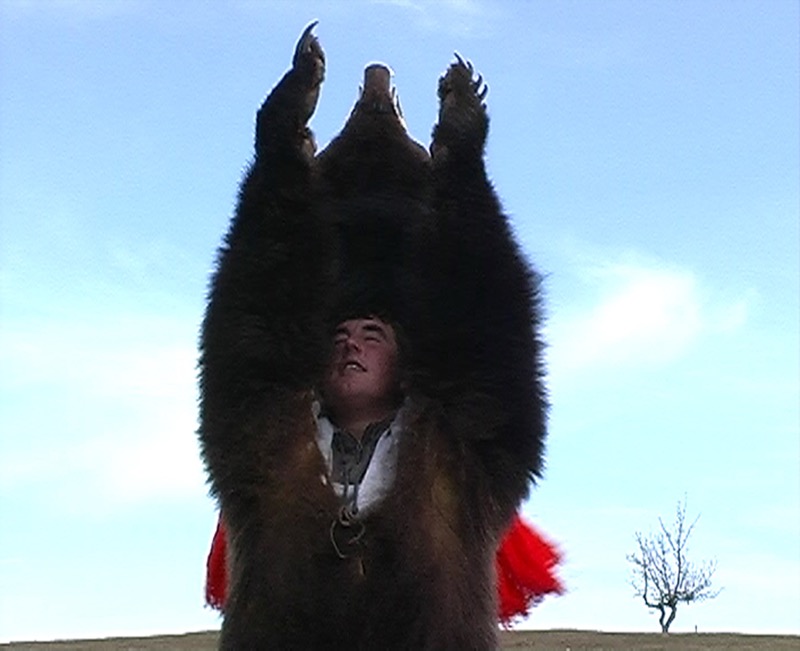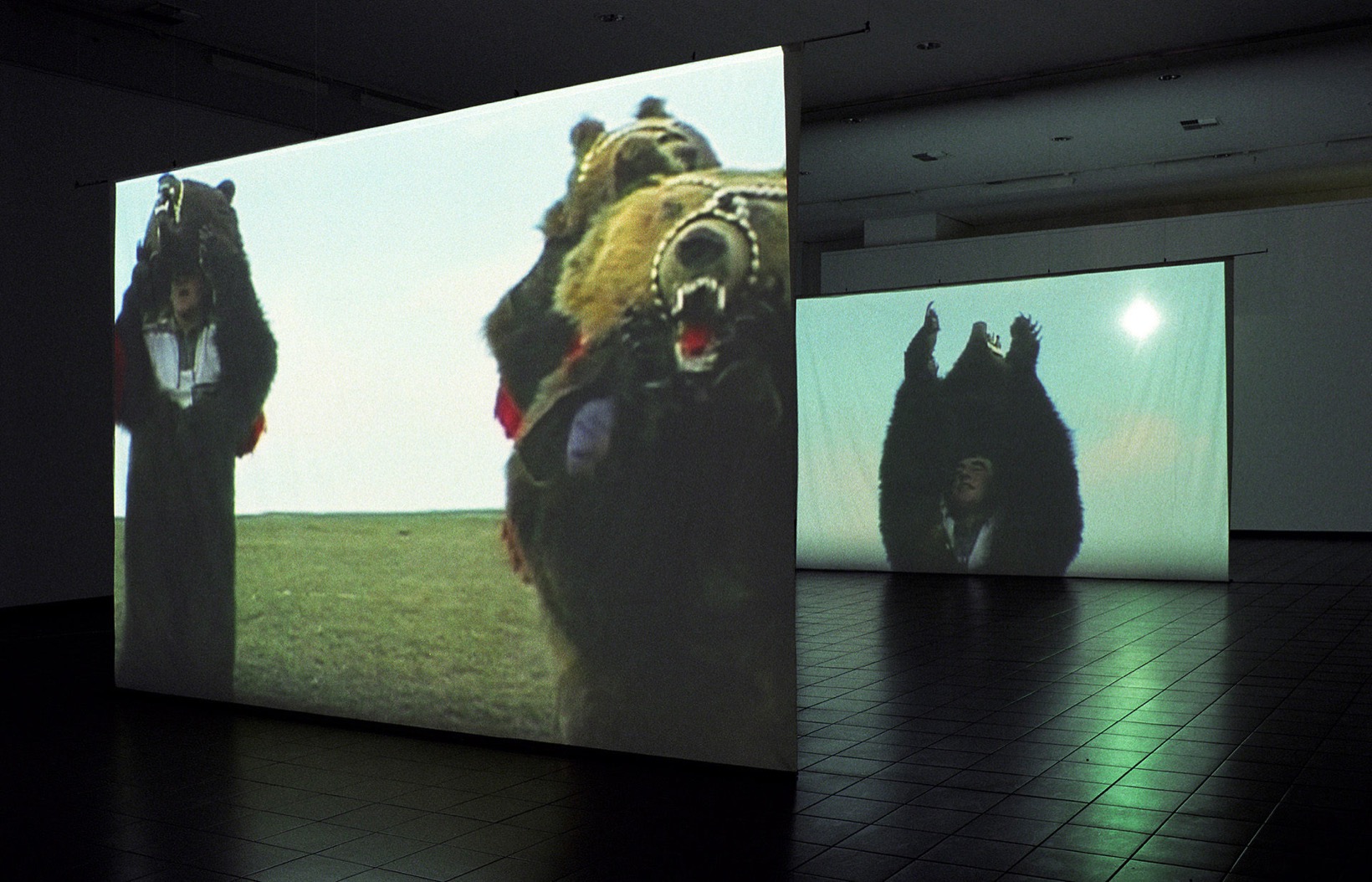
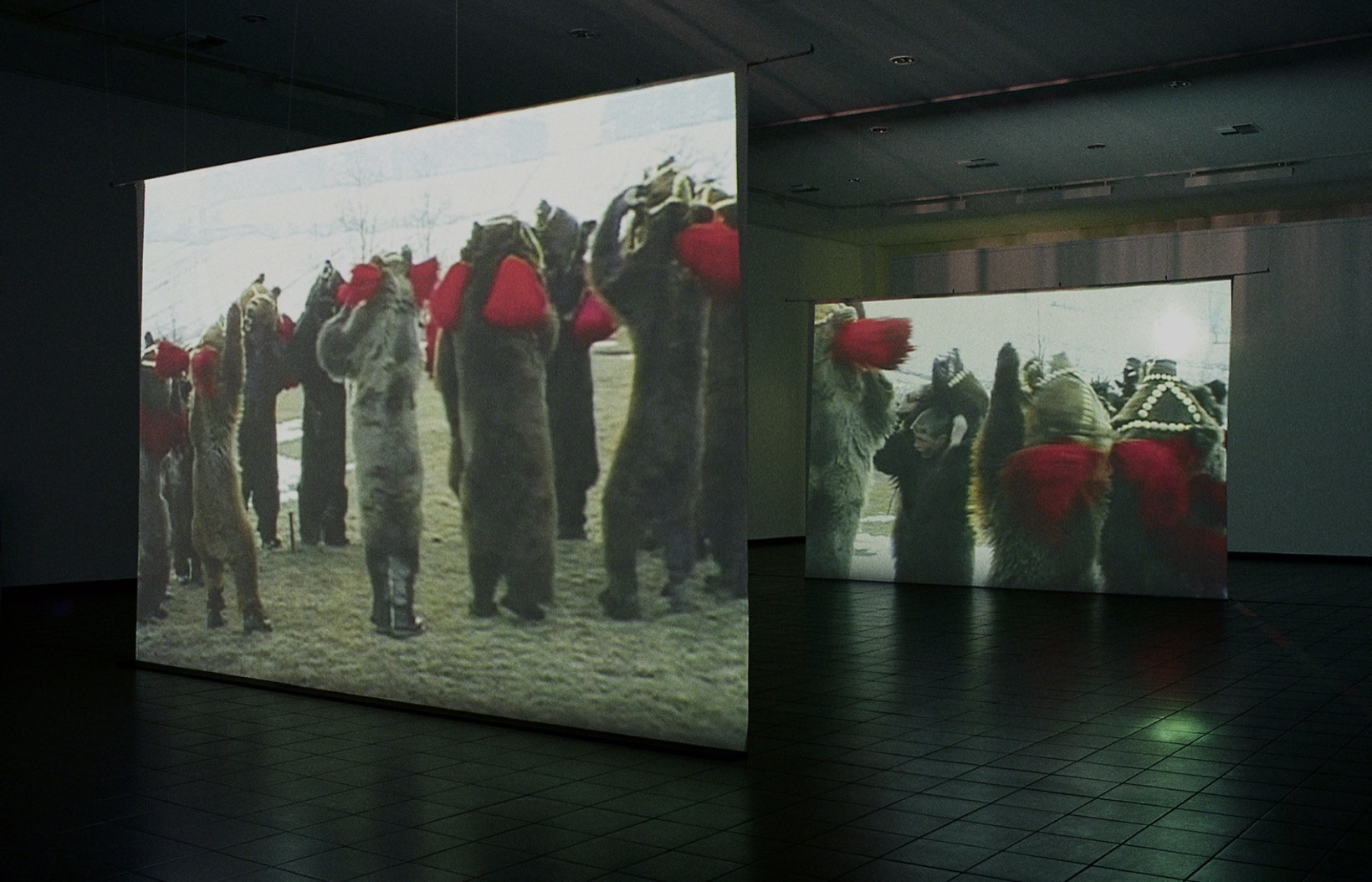
From Time To Time
Two-channel video installation, 2003, DV, 9 min. 56 sec., 4:3
In her two-channel video work “From Time to Time,” the Romanian artist Aurelia Mihai re-stages an ancient ritual which is still performed in some villages of the West Carpathians in the period between Christmas and the New Year. As a result of modernization, even in rural areas it is only presented in the context of a street theater so that Mihai’s cinematic documentation of the performance represents a two-fold mediatized re-appropriation. Mihai dramatizes as if on a stage the arrival of the people dressed as bears, their formations, the performance, as well as the actors’ exit. The powerful off-stage drumming combines with the distant barking of dogs. In the barren, apparently inhospitable landscape strewn with patches of snow, a single, gaunt tree functions as a kind of natural an- tennae between heaven and earth. On one side of the facing projections visitors are confronted with a single dancer; on the other with the forceful approach of an apparently threatening multitude.
The duplication of similar types bears reflects the principle of diversity formulated by Deleuze and Guattari in their conceptual draft of becoming animal. By donning fur skins the human wearers surrender their own personalities for the length of the performance and assume the animal’s group identity. The animal world and human world melt together in a dream-like, surreal dance. The young men in costumes undergo an initiation rite during this transitional phase of the year, which serves to strengthen the bonds of community. Because bears seem to disappear in winter, retreating either to hibernate or to raise their young in caves, and only emerge again in spring, they are considered powerful symbols of the eternal. The work’s title, “From Time to Time,” refers both to its cyclical nature as well as the formal decision to have it play continuously as a tape-loop.
The shamanistic metamorphosis observed on screen is never perfect, the movements and occasionally visible faces of the men leave no doubt that the bears are costumed people. Despite the get-up, becoming bear is carried out not by imitation but rather on a more symbolic level. The bear here is not to be read merely as a symbol for a new beginning but also as a human alter ego. Because they at times walk upright, bears and humans are quite similar and in many myths and cultures bears are considered human relatives or humans under a spell. Mihai’s work, however, also invites precisely the opposite notions.
